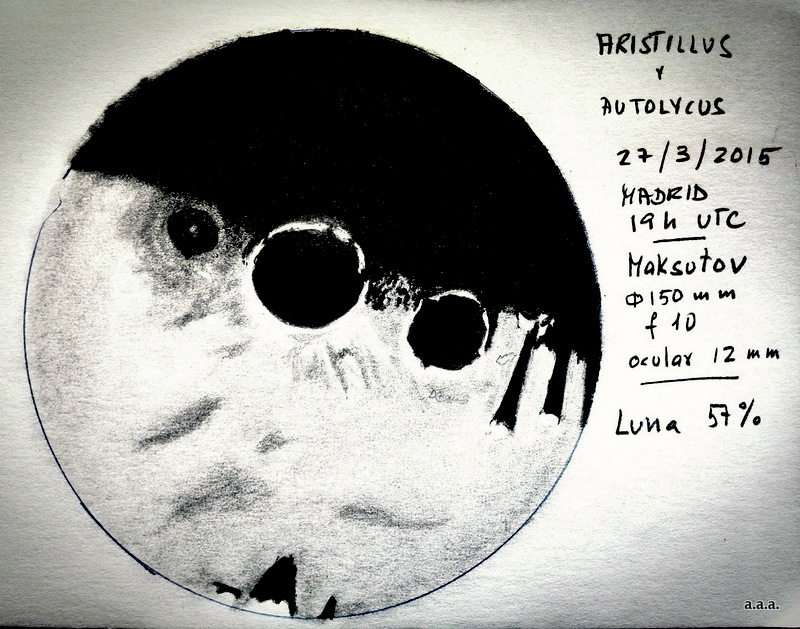
Object:
Lunar Craters, Aristillus and Autolycus
Location: Madrid Spain
Date: March 27, 2015
Graphite pencils, on white paper
Aurelio Alcalde
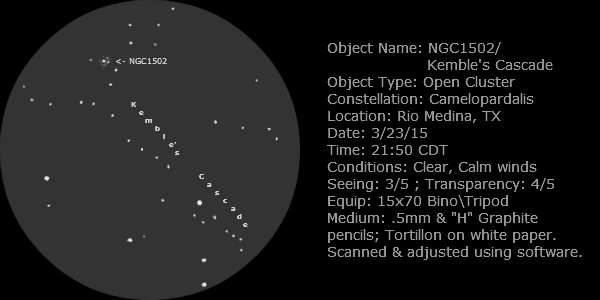
This sketch contains the open cluster NGC 1502 and an asterism made up of a 2 1/2° chain of stars that forms a line from the cluster towards the northwest called Kemble’s Cascade. Kemble’s Cascade was so named by the late Walter Scott Houston, who authored Sky and Telescope’s magazine column “Deep Sky Wonders” for decades. Lucian Kemble was the person who sent Houston a description and drawing of the cascade.
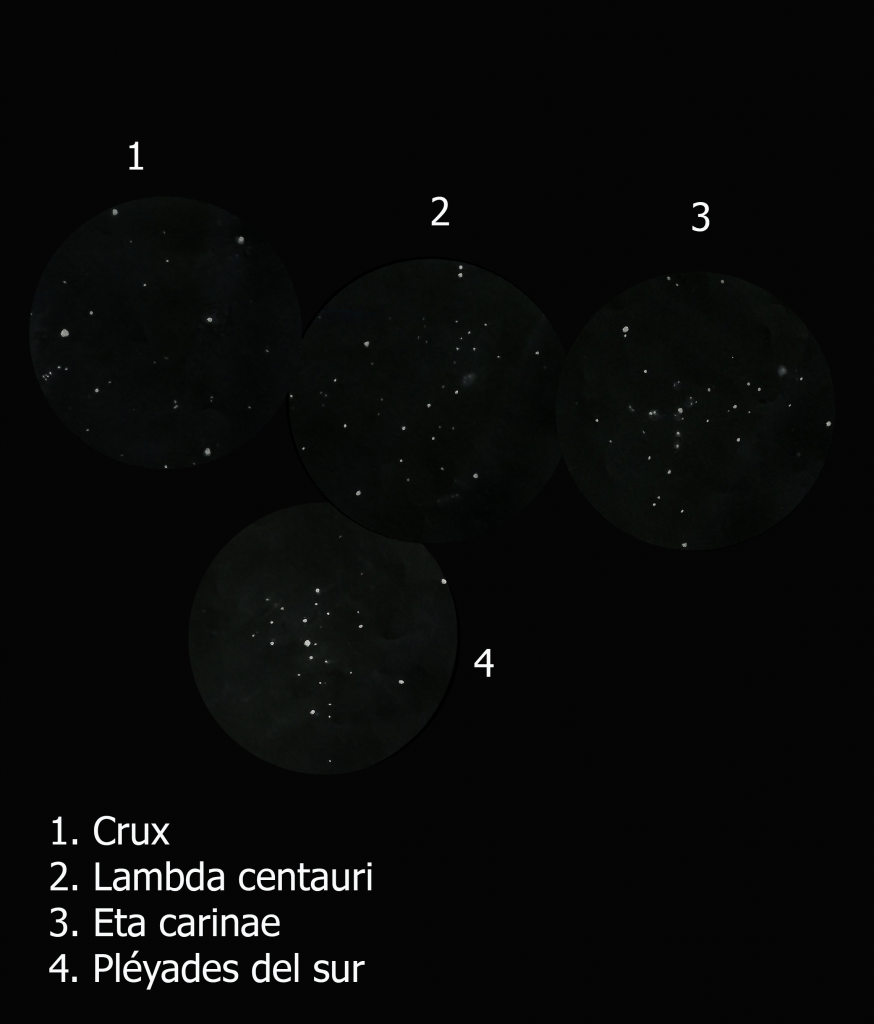
English:
Hi ASOD, in my country there are not a good average of cloudless nights, and that to say of my city, however the weather of January and February has left draw these sectors of south sky with my binoculars 10×50.
Spanish:
Hola ASOD, en mi país no hay un buen promedio de noches despejadas y que decir de mi ciudad, sin embargo el clima de principio de año me ha dejado dibujar estos 4 sectores del cielo sur con mis binoculares 10×50.
1. Crux: 23 feb 2015, 06:7 UT.
2. Lambda centauri: 14 jan 2015, 07:58 UT.
3. Eta carinae: 12 jan 2015, 07:46 UT.
4. Pléyades del sur: 07 jan 2015, 07;32 UT.
Location: Medellín, Colombia.
Media: Graphite Pencil- 2H, HB, 2B, PS invert.
Optical instrument: Celestron Binoculars 10×50.
this are me first contribution, I hope you will enjoy it.
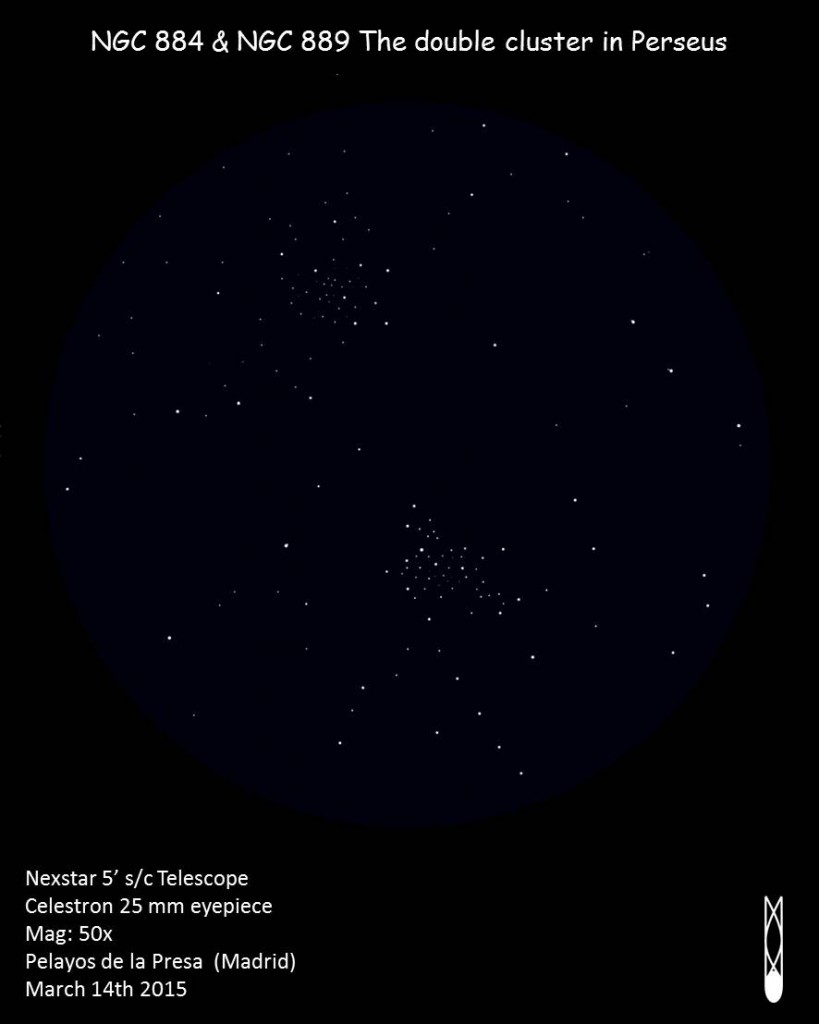
Hola!
The double cluster in Perseus has always been a challenge for me. But when I came across an impressive dark sky, I did my best and this is the result.
I hope you like it.
Object Name: NGC 884 & NGC 889 The double cluster in Perseus
Object Type: Open Cluster
Constellation: Perseus; R.A.: 2h 20m; Dec: 57° 08′
Location: Pelayos de la Presa, Madrid, Spain
Date: April 14th 2015 22:00 h.(CET)
Temperature: 2 ºC
Seeing: 4/5
Telescope: Celestron nexstar 5′ S/C.
Eyepiece: 25 mm celestron.
Magnification: 50x
Media: Graphite pencil on white paper. Scanned and then inverted and processed image with GIMP
Regards and clear skies!
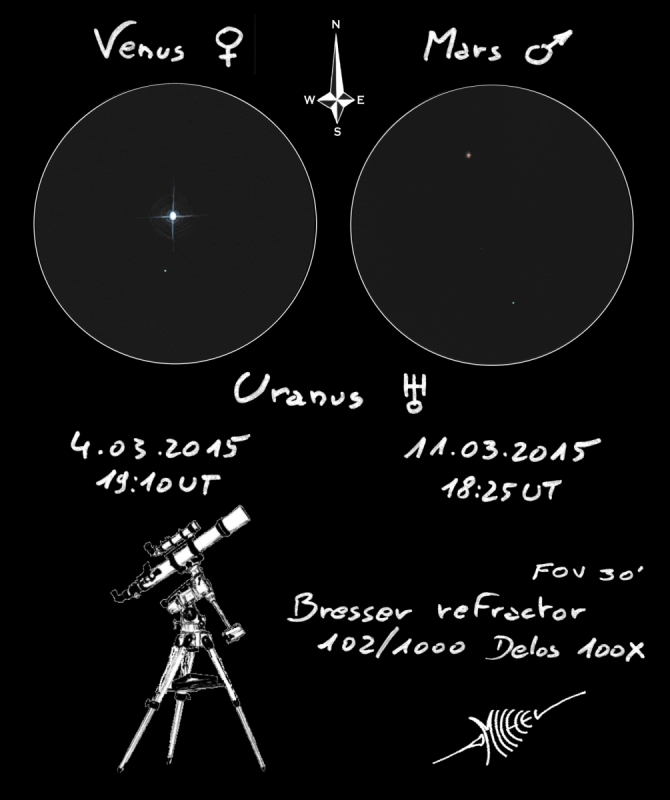
Object Name (Venus, Mars, Uranus)
Object Type (Planet conjunctions)
Location (Artignosc-sur-Verdon – Provence, France)
Date (11/03/2015)
Media (graphite pencil, watercolour pencils, white watercolour paper, Paint.net)
I always have issue to find Uranus, without GoTo, it’s not so easy…and I don’t like facility…
Thinks are moving in our planet system. It’s why “planetos” in Greek means “vagabond”.
So I use the opportunity of this double conjunction just a week from each other to find Uranus and its so nice colour.
The Venus-Uranus separation was 5.2’ Venus was 10’000 more brilliant than Uranus, while the separation between Mars and Uranus, one week later was 16.25’
The faint K star between Mars and Uranus is HIP 4325 mag=9.5, so no Uranus satellites were visible with my material.
I sketch the two fields on white watercolour paper with inverted method using a chromatic wheel, orange for Venus, blue for Mars and crimson red for Uranus then I just have to invert the two sketches after scanning. The deal is to manage the colour values in inverted mode.
Clear sky to you all, and for some of you I wish you a nice eclipse on Mart 20.
Michel Deconinck Aquarellia – Astronomie
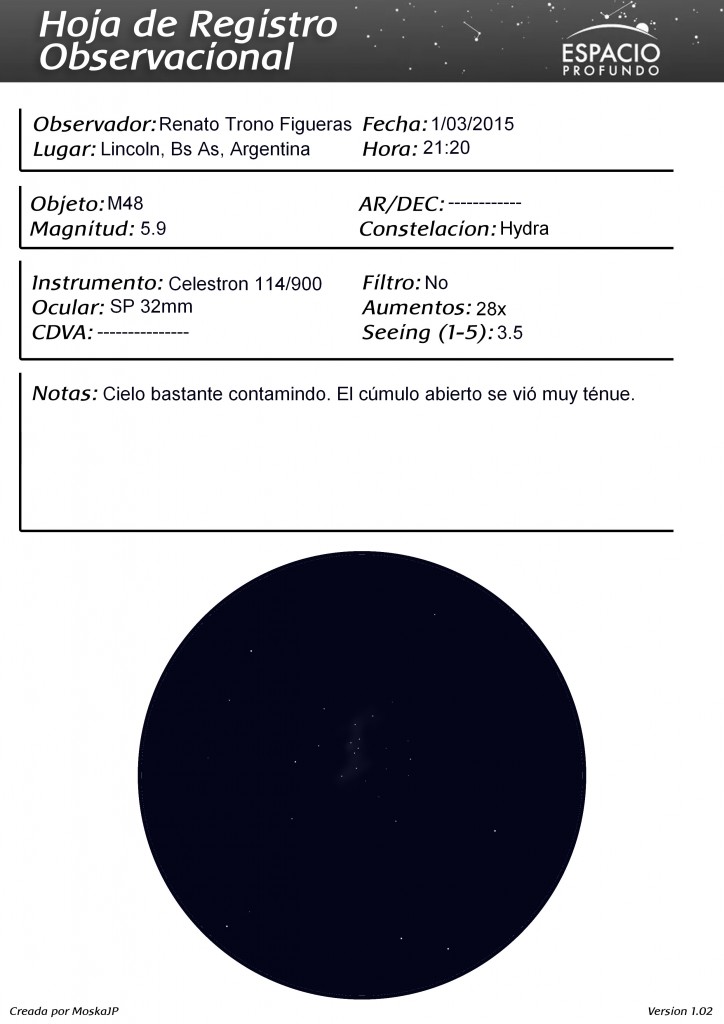
Hi ASOD. My name is Renato Trono Figueras. I’m 15 years old. I’m from Lincoln, Buenos Aires, Argentina.
Object Name: M48
Object Type: Open Cluster
Location: Lincoln, Buenos Aires, Argentina
Date: 01/03/2015
Media: Graphite Pencil- 2H, 4H, HB, 2B and 4B- PS
Telescope: Celestron 114mm/900mm
Eyepiece: SP 32mm
Seeing: Regular
Transparency: Regular
Weather: Clear
I hope you post my sketch soon. Thanks you very much!
Regards & Nice Skys
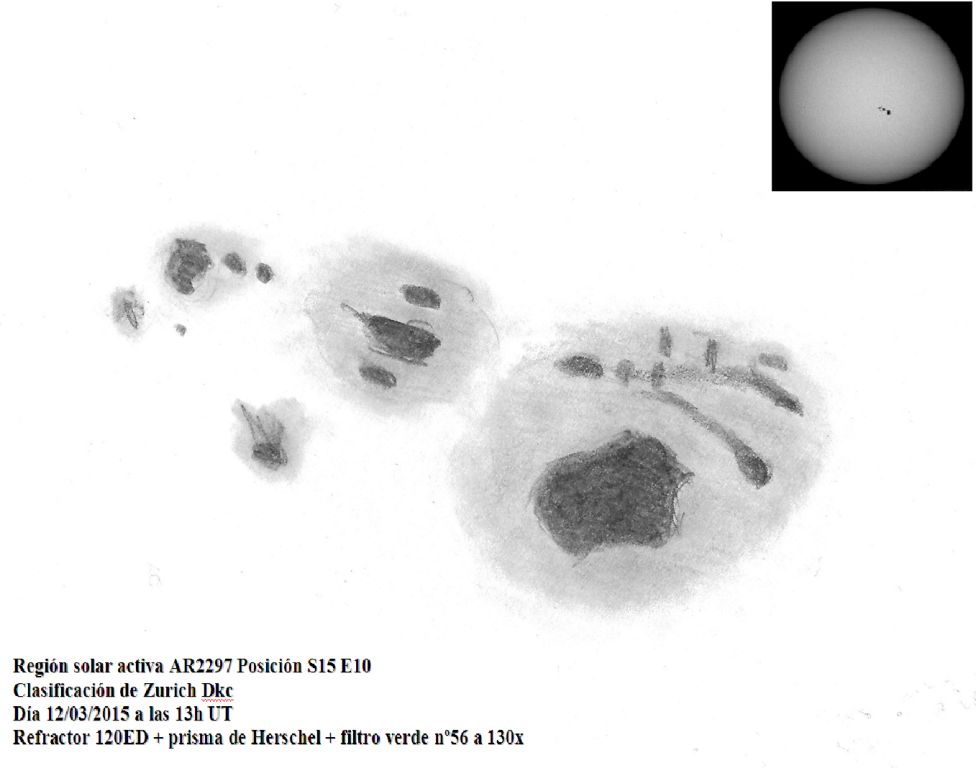
Solar active region AR2297
Position: S15 E10
Classification of Zurich: Dkc
Day March 12, 2015 at 13h UT
Equipment: 120ED Refractor, Herschel wedge, green light filter nº56, 7mm eyepiece to 130x
Media: 1B graphite pencil and white paper
My first solar drawing, I hope you will enjoy it.
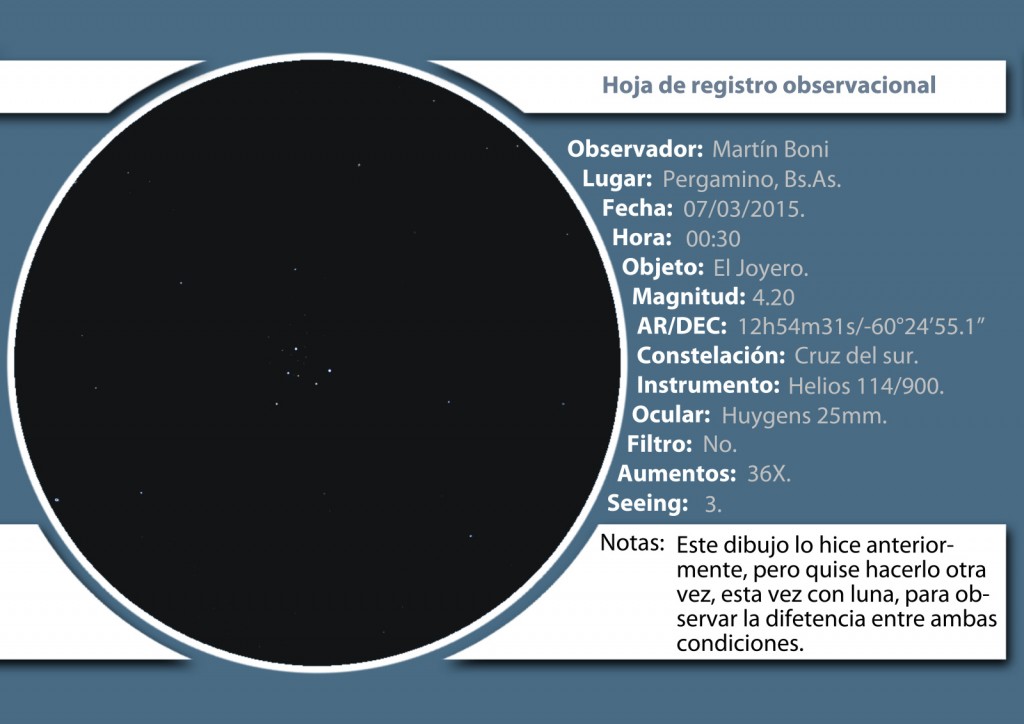
Este es el segundo dibujo que hago de este cúmulo abierto. Decidí volver a retratarlo bajo condiciones distintas de observación, esta vez había Luna llena y la idea es comparar ambas condiciones de observación. El seeing no era muy bueno, la atmósfera presentaba turbulencias que desenfocaban la imagen por momentos.
El dibujo fue realizado con papel y lápiz, posteriormente procesado en Photoshop para invertir los colores y simular el efecto de resplandor que genera la luna en el cielo. Además agregué algo de color a las estrellas, tal como las veo a través del ocular (huygens 25mm), pero los colores se atenuaron un poco al fusionar una capa celeste para dar el tono de luz de Luna al fondo. En realidad deberían verse los azules y el rojo de la estrella central más vivos. El equipo que utilicé para realizar el sketch es un telescopio reflector marca Helios, de 114mm de apertura y 900mm de distancia focal. El dibujo fue realizado desde Pergamino, Buenos Aires.
Spanish-English Translation via Google Translate
This is the second drawing I do this open cluster. I decided to portray under different viewing conditions, this time there was full moon and the idea is to compare both conditions of observation. The seeing was not very good, the atmosphere had desenfocaban image turbulence at times.
The drawing was done with paper and pencil, then processed in Photoshop to invert the colors and simulate the glow effect generated by the moon in the sky. Also I added some color to the stars, as I see through the eyepiece (huygens 25mm), but the colors are dimmed a little by fusing a celestial layer to set the tone of moonlight in the background. Actually should be blue and red brighter central star. The team I used to do the sketch is a reflector telescope Helios brand, 114mm aperture and 900mm focal length. The drawing was made from Parchment, Buenos Aires.